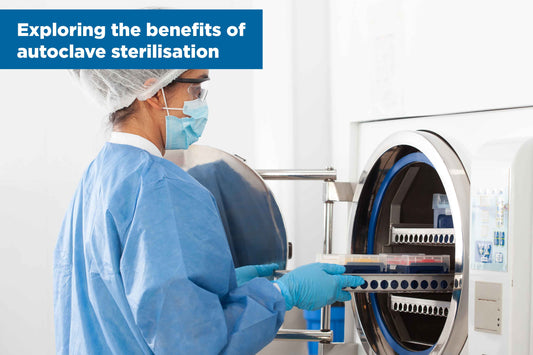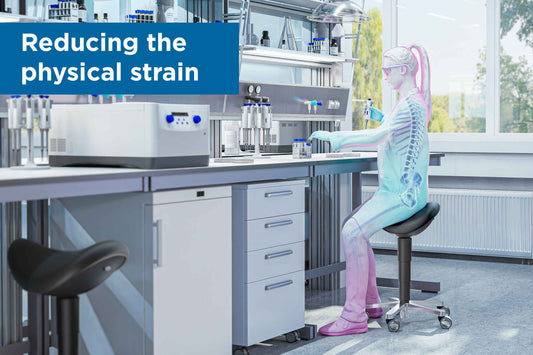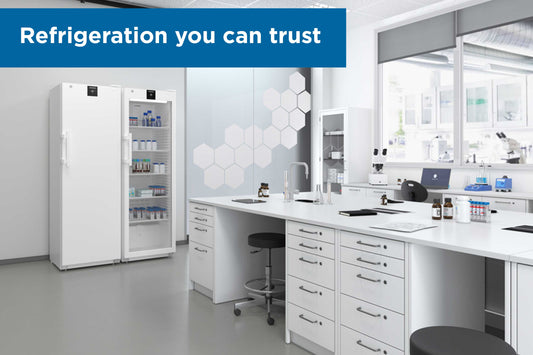Safety matting is an important investment for any workspace. Prioritising worker safety, the correct matting can reduce fatigue, maintain hygiene standards and help prevent contamination between hygienic areas. Supporting compliance with strict regulatory requirements, safety matting has never been more essential within the food and pharmaceutical sectors thanks to its contribution to both operational efficiency and the safety of employees.
Depending on the purpose of the safety matting in question, careful consideration should be taken to ensure that matting is provided in areas where maximum benefits can be attained. We will be discussing how to select the best matting for your needs and the best placement of this essential safety equipment below.
Why is safety matting important
The most common type of safety matting is the use of anti-fatigue mats. Providing comfort for workers, our food-grade, ESD and autoclavable matting reduces muscular strain in areas where workers are expected to stand for extended periods of time. It is thought that by enhancing worker comfort, employers can expect a higher productivity rate and help avoid periods of staff illness. This is proven by 45% of respondents from COBA Europe’s 2019 study who identified people taking sick leave as a direct result of standing at work. Of those who invested in anti-fatigue matting as a solution, 68% considered this to have had a positive effect on the wellbeing of staff. 86% found anti-fatigue matting helped to reduce pain or serious health conditions.
*https://www.cobaeurope.com/news/standing-at-work-survey-2018-10984
Types of safety matting:
Food-grade
Made from 100% anti-microbial nitrile rubber, our food zone anti-fatigue matting is ideal for wet or greasy production areas. The anti-microbial additive prevents the growth of bacteria and other contaminants while its hygienic design features an open underside to allow fluids and particles to pass through to drainage areas without causing moisture to pool.
ESD
Electrostatic Discharge (ESD) matting is also available. This protects sensitive equipment by dissipating electrostatic charges into the ground using a grounding cord. Users must use heel grounders or conductive shoes to protect themselves from static shocks during use.
Autoclavable
Autoclavable matting may be a perfect option for areas with a high hygienic focus. Made from 100% anti-microbial nitrile rubber, our autoclavable matting can be used in dry, wet and oily environments. Providing maximum bacteria control, this anti-microbial and anti-porous matting is autoclavable up to 121°C.
Tile top anti-microbial
Well-suited for both labs and cleanrooms, our tile top anti-microbial matting’s rubber composite sponge offers maximum comfort while the PVC surface offers durability and high chemical resistance.
Sticky tack mats
Unique in its purpose, sticky tack mats feature an adhesive surface that collects dirt and debris from the soles of shoes as users walk or wheel over. This reduces the risk of contamination and helps maintain the high hygiene standards of higher-grade cleanrooms. Completely disposable, the mats feature multiple layers so that dirty layers can be peeled off once they become saturated, leaving a fresh adhesive layer ready to be used.
Where should they be placed?
In both the food and pharmaceutical sectors, safety matting should be strategically positioned in areas where there are potential hazards, high traffic, or where hygiene and ergonomic support are critical. The goal is to enhance worker safety, prevent contamination, and reduce fatigue while maintaining regulatory compliance.

We’ve compiled some of the key considerations to make below:
Food processing and wet areas:
Our food-grade anti-fatigue matting not only prioritises hygiene, with its open underside making it easier to hose down, but it is also resistant to vegetable and fish oils, animal fats and citrus liquids.
Positioning: around sinks, wet cleaning zones, areas where liquids are being handled and cooking areas.
Near electrical equipment:
Protecting both nearby users and sensitive electrical equipment, the use of ESD matting can prevent costly damage to equipment and reduce potential fire risk.
Positioning: around large or delicate machinery.
Labs and cleanrooms:
To provide relief in areas where workers are standing for long periods of time, we would recommend the use of our tile top anti-microbial and autoclavable safety matting depending on hygiene routines. While the tile top anti-microbial matting provides comfort and prevents muscular strain, our autoclavable matting may be best for areas where stringent hygiene is necessary.
Positioning: high traffic areas and where workers may stand for extended periods of time.
Entrances and exits:
The use of sticky tack mats is vital for areas concerned with particle counts or cross-contamination from dust and dry particle matter.
Positioning: Sticky tack mats should be used in entrances and doorways (alongside PVC door curtain strips, where appropriate) to prevent dust and contaminants from crossing between areas.
Taking the proper precautions
Correctly placed safety matting not only provides the benefit of helping staff avoid simple fatigue, but helps reduce the risk of slips, trips, and falls, contributing to a safer, more productive workplace. An underrated essential for many businesses, taking the time to purchase safety matting is guaranteed to save money in the long run by reducing both staff injury and damage to equipment as well as aiding hygienic processes. From reducing contamination to aiding clean down processes, each of our safety matting options are enhanced to suit hygienic environments.
Want to find out more? Get in touch with us today!
Just call our team of experts on +44 (0)1603 788 833 or email mail@teknomek.co.uk.




